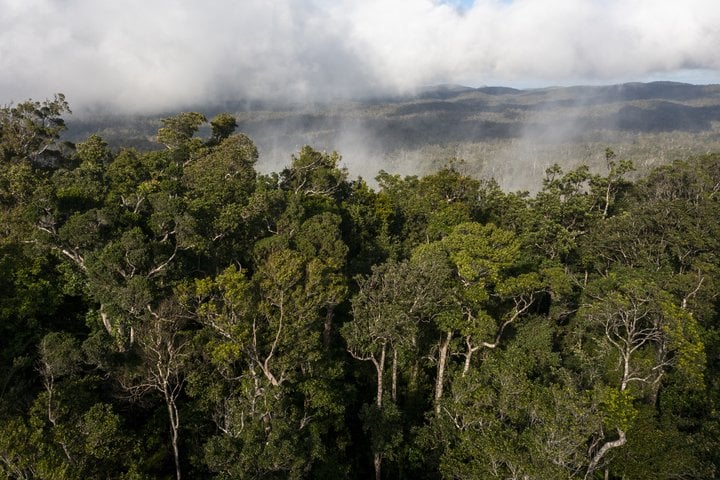A wind farm seems like a great idea, but not when you look at the fine print.

Chalumbin is home to endangered wildlife and habitat.
Several endangered species of flora and fauna exist in Chalumbin: the Red Goshawk, Australia’s rarest raptor, the Magnificent Brood Frog whose habitat is rapidly being cleared at nearby Kaban and the Greater Glider who is estimated to be also “significantly impacted” by the development.
Wind turbines dominate the air space around them.
Bats and birds are not just killed by striking turbines but are driven out of their airspace by them ie: their “lands in the sky”. Raptors need space to glide, soar and hover while they hunt and wind turbines can impede this, fragmenting airspace and destroying natural flight courses. In effect, sky “colonisation” by 160 metre high wind turbines is tantamount to habitat loss for vulnerable raptors, bats and insects - it just isn’t stated as such.
Bat habitat is reduced significantly in the presence of wind turbines.
A recent study reveals bats will not inhabit area around wind turbines, reducing their habitat further. Another study indicates ground dwelling mammals, often ignored in the debate, have higher levels of stress hormone living around wind turbines.Yet another study indicated raptor mortality due to wind turbines can be catastrophic to fragile populations as they are long-lived birds that produce few offspring. Even just a few adult deaths per year from a wind turbine impact can greatly impact raptor populations. This is particularly bleak news for the Red Goshawk, whose nest has been found in Chalumbin.
Full environmental rehabilitation of a wind farm is impossible.
Each wind turbine rests on a whopping 800 cubic metres of concrete poured deep into the ground. Multiply this by 95 and you'll have the amount of concrete that will lie forever in the earth of Chalumbin - 76,000 cubic metres of concrete. While superficially wind farms can be "disappeared", the earth tells a different story. The concrete will be there indefinitely. This can affect groundwater distribution and groundwater storage. The use of heavy machinery to remove wind turbines can also result in pollution from the spills of petrol and oil.
Do wind developments really provide "jobs and growth"?
Wind farms are often sold to rural communities under the premise of "jobs and growth".In reality, there are only 10 - 15 full time jobs offered with this massive 95 wind turbine development. Staff typically consist of 10 technicians, a project Manager and a small support staff. Who will fill these roles? Will it be locals? While the promise of a few jobs might be enticing to small regional areas like ours, the unique habitat and ecosystems of Chalumbin should not pay the price for this. Especially for so few long term, full time jobs offered.Infact, regional tourist operators rely on pristine vistas to encourage visitors to our part of the world.
A wind farm creates community division.
Large scale industrial energy schemes split small communities like ours and create division. We suspect remote locations are chosen cynically as there is likely to be less chance of community resistance to developments. Government and developers can also exploit the community’s anxiety around job prospects and employment opportunities.
Numerous large scale renewable developments are planned for our region over the next 10 years.
Already we are witnessing the destruction in nearby Kaban, a wind farm being developed in Far North Queensland. Endangered animals live at Kaban. The Magnificent Broodfrog is now teetering on the brink of extinction thanks to habitat here being cleared for roads and massive concrete foundations. There is no Federal or State mandate to ensure renewable energy companies track life loss, or make those figures transparent.
Conserving remnant wilderness and farmland should be our primary goal.
Wilderness conservation ensures the water cycle, soil and delicate ecologies are kept intact.
Wilderness provides biological diversity and cross-linked biotopes increase survival chances for migratory species.
Healthy wilderness has a balancing effect on extreme weather patterns and permanently reduces carbon dioxide.
Wilderness is natural capital. The people of Australia love our wilderness: it is inspiring and provides spiritual succour.
Habitat / wilderness loss is Australia’s number one cause of species extinction. It is our urgent responsibility to protect the wilderness we have left.
.